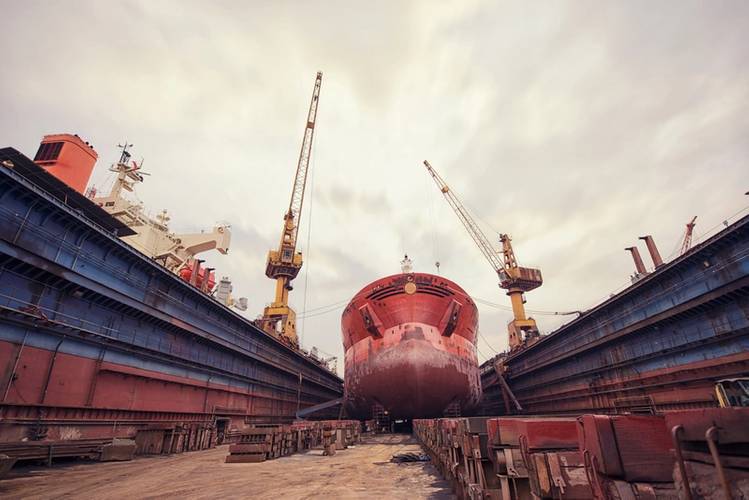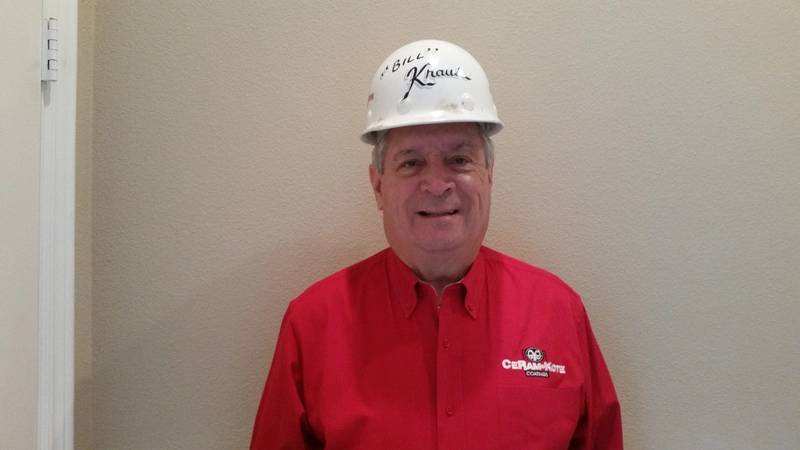The proper lining of ballast tanks is essential and critical to ship safety. Not too many decades ago, ships traveling the North Atlantic routes were experiencing terrible losses from outright sinking in the turbulent seas. It was eventually discovered that the primary culprit was hull failure from ballast tanks rupturing from the inside out due to simple, plain old-fashioned rusting and galvanic corrosion. The U.S. Navy led the way and came up with a recommended formula, or recipe, for a ballast tank coating that paint manufactures could copy in bidding for Navy business. And the ballast tank lining industry was born. It wasn’t too long before companies began to develop their own, improved formulas. This competition served to drive an ever-expanding list of new linings. But, even today, reliability is far from perfect. There is room for improvement.
Enter CeRam-Kote from Big Spring, Texas. Several years ago, having learned of the excellent CeRam-Kote performance in tough environments, the U.S. Navy invited this west Texas company to get involved. But, let me back up just a bit.
“From shotgun barrels . . . to ballast tanks”
CeRam-Kote is a patented, ceramic particle loaded polymer that, due to the ceramic particles which comprise roughly 60 percent of the cured lining, is able to out-perform its own chemistry. It was originally developed back in 1985 by Chairman and Founder, John Freeman, PhD-Chemistry (and a former oil field “roughneck”) to line the shotgun barrels of local dove hunters to keep the newly required steel shot from tearing up their barrels (lead shot had recently been outlawed). As it turned out, it not only worked, but allowed the shot pattern to maintain a narrower radius and travel further. Suddenly, CeRam-Kote was a household name in west Texas. Then, when the U.S. Air Force needed a tough coating to protect the leading edges of the wings of the F-15 fighter as well as other critical surfaces, CeRam-Kote beat out its competitors. Today, it serves the same purpose on the F-16, F-22 and the Air Force-Navy-Marine Corps F-35 fighter jets. In the meantime, west Texas downhole oil field pipes were being eaten up by hydrogen sulfide gas as well as experiencing corrosion from the brine environment thousands of feet below. CeRam-Kote solved the problem, and today this factory is among the major worldwide suppliers of both inside and outside diameter protective coatings for the downhole oil field pipes used around the globe. It is used extensively on offshore oil platforms as well.
Downhole oil field pipes are nothing more than long, slender ballast tanks that experience a much greater corrosive environment than ship ballast tanks do. And thus, by default, CeRam-Kote has become an instant leader in the field. After four years of development to add even greater capability to their product, CeRam-Kote 54 SST 100 is now available to the ballast tank market.
It has been designed to meet the requirements of U.S. Navy MIL-PRF-23236 for shipboard structures. Furthermore, it has also been designed to meet an even more stringent specification prescribed for the offshore oil industry in the South China Sea. The international company Petronas sponsored the testing. Of some 28 critical parameters, CK 54 SST 100 passed 25 of the 28, with the remaining three ruled as insignificant. Of the top worldwide coating suppliers also in the competition, not one other company scored acceptable on more than 8 critical parameters.
What is CeRam-Kote 54 SST 100?
It is a 100 percent solids, ceramic particle loaded polymer that yields performance characteristics significantly greater than liquid epoxy, fusion-bond epoxy and other high performance coating systems. It protects by binding ceramic particles to a unique polymer, thus creating an encapsulating ceramic bowl. Each ceramic particle is resin coated and becomes tightly packed in the cured film laced throughout the anchor profile. This results in dynamic intangible benefits such as excellent immersion resistance, cathodic disbondment resistance, abrasion resistance and impact resistance. And it is flexible. In addition, dialectric strength of greater than 1,500 volts/mil is provided, as well as excellent permeability factor and adhesion many times that of a typical epoxy. Adhesion drives out oxygen, dialectric strength impedes galvanic current flow, and low permeability keeps water molecules from penetrating to the substrate. This results in outstanding corrosion resistance.
Ease of application
CeRam-Kote 54 SST 100 can be applied to the properly prepared substrate with conventional airless spray equipment (plural component spray equipment is not required). It is a combined primer and top coat all in a single coating. The recommended 20 mils thickness can be applied in a single pass. White is the stock color. Surface prep of SSPC SP-10 (near white metal) is recommended, however it can be used on marginally prepared substrates and rusty, damp steel surfaces. And, it will coat over old cold tar epoxy that still has proper adhesion and has been swept blasted to create an anchor profile.
CeRam-Kote is a preferred coating for
floating dry dock pontoon decks. Now, the CeRam-Kote factory is proud to add significant improvement to the ballast tank lining industry. Accelerated testing is being performed in accordance with IMO PSPC for a potential 20-year service life.
The Author
William A. “Bill” Kraus holds degrees in both Electrical Engineering and Mechanical Engineering from the U.S. Naval Academy, Annapolis, Md. He served with the U.S. Navy Amphibious Forces, Pacific Fleet during the Vietnam War for four years. He then joined the electronics industry, where he operated his own electronic test equipment manufacturing company for 27 years. After a year of retirement, Kraus became interested in nontoxic coatings for recreational boat bottoms. This led him to discover the unique qualities of CeRam-Kote, a ceramic particle loaded, epoxy coating manufactured in Big Spring, Texas. Teaming with BAE-San Diego Ship Repair, he perfected the CeRam-Kote Pontoon Deck Preservation System in use today throughout the shipyard industry. Kraus has become a leading corrosion control specialist in all areas of shipboard, as well as shipyard, maintenance. He serves as an industry CeRam-Kote Tech Rep, operating out of San Diego, Calif. as Ram Protective Coatings Company.















